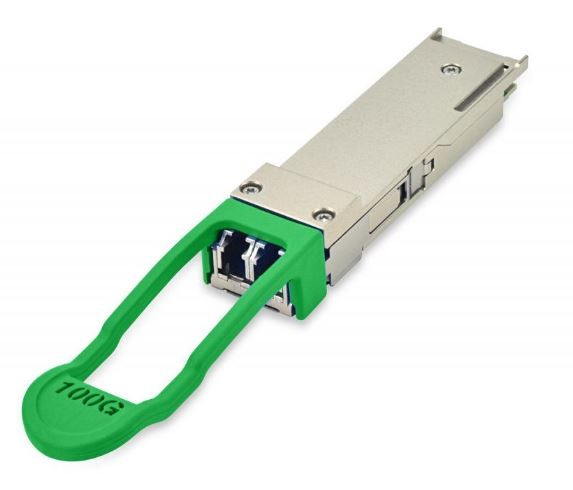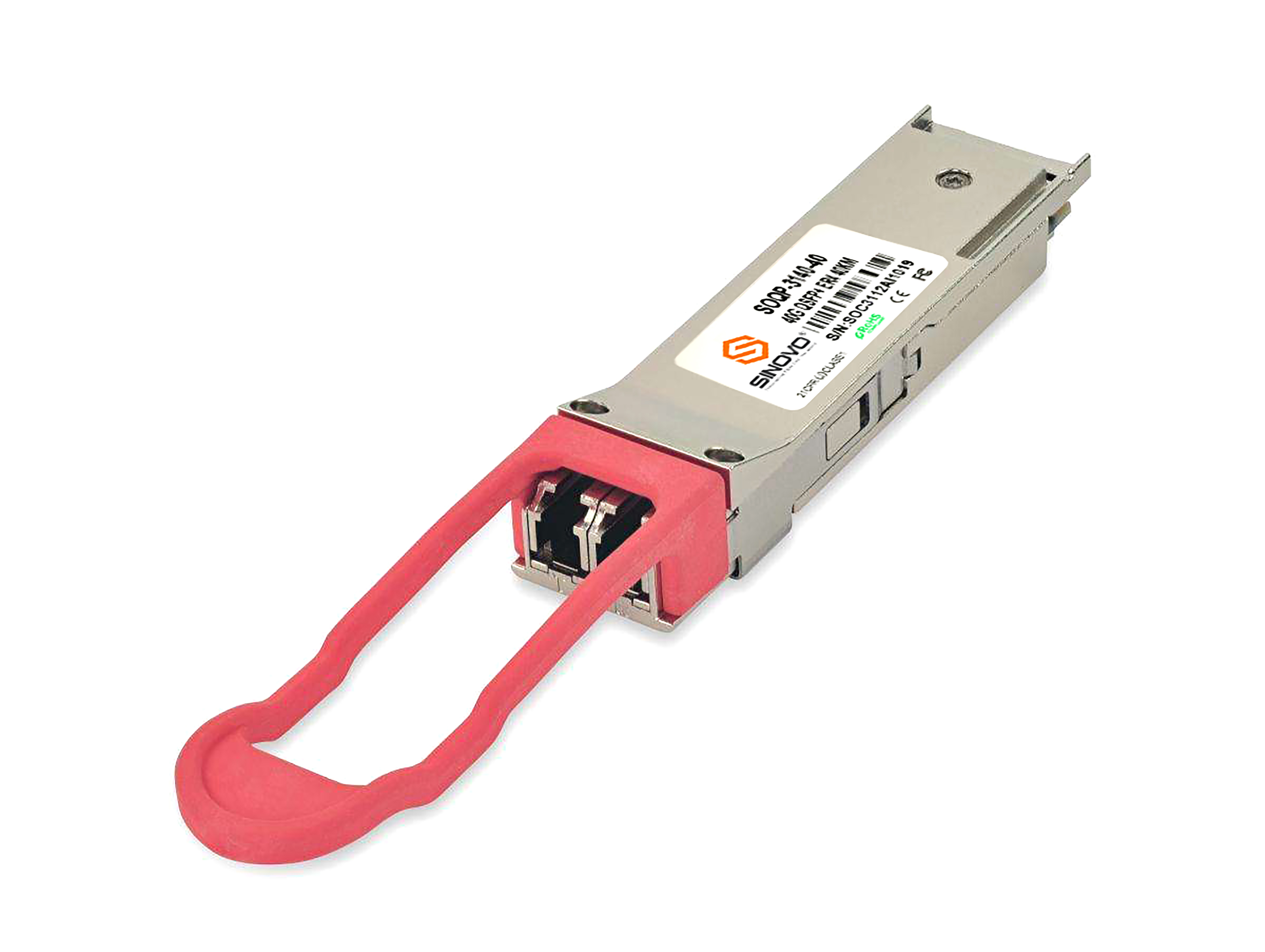DateTime:2018/4/4 0:00:00
Experts in the communications industry predict that the quantity of 400G modules for Datacom will be around 2020, but the early development of the manufacturers is already in full swing and the solutions are also varied.Xiao Bian only analyzes the pros and cons of various programs from a technical perspective in order to readers.

Vertical cavity surface emitting laser (VCSEL) Several common VCSELs are usually 850nm wavelength, multimode; they are characterized by low cost (production and processing, test costs), low power consumption, easy coupling (the spot is close to a circle), and easy arraying, so CoB process can be used to achieve large-scale integration Module. Since VCSELs have certain difficulties in achieving high speeds, it seems that 400G should be implemented as 8x50G PAM4, which is the form of 8 channels of 25G baud rate plus PAM4 modulation. VCSELs dominate in applications less than 100 meters (receiving optical modules and active optical cables) and can further integrate more on-board optical modules (OBOs). However, VCSELs require multimode fiber and the cost is higher than that of single-mode fiber. Datacom system manufacturers need to prepare multimode (below 100 meters) and single-mode (greater than 100 meters) fibers.

Therefore, some system manufacturers also have the hope of using other technologies to unify the idea of a single optical fiber.
Electro-absorption modulation laser (EML)
EML refers to an integrated device of an electroabsorption modulator (EAM) and a DFB laser, which belongs to an external modulation method. Therefore, the wavelength is low, the signal transmission quality is high, and high-rate modulation is easily realized (the baud rate of 50G or more is not a problem). Long distances above the km have been widely used. EML has the advantages of easy integration and miniaturization, low modulation voltage, high extinction ratio, and high modulation rate. It only requires 4 optical paths (4x100G) for 400G. However, the EML is relatively expensive in the relatively loose application market. In addition, the traditional EML requires temperature control, which leads to an increase in the overall power consumption of the optical module. The data communication module is characterized by low price and low power consumption, so it seems that EML does not show advantages in these two points. The good news is that technology has always evolved as the needs change: Recently, uncooled EML has come out. In fact, uncooled EML is to make EML optical devices that are less sensitive to environmental changes, so that under a range of temperature conditions (for example, 0 to 70 degrees), no temperature control is required, or simple temperature control can work normally. This eliminates temperature control at least in the module and partially solves the problems of cost and power consumption. It is believed that in the field of digital communications, uncooled EML can be extended down to 2 km of applications and will be one of the powerful options in 400G optical module products.
Silicon Photonics (SiP--Silicon Photonics)
Silicon Photonics (SiP--Silicon Photonics) From a long-term perspective, silicon optical technology will eventually lead to OEIC (Opto-Electric Integrated Circuits), but silicon modulators are more mature at present. Due to the external modulation, the signal transmission quality is high and it is easy to realize high speed. Combined with its small size and high degree of integration, it is very suitable for digital communication applications below 2 kilometers. However, the application of silicon light in the market is not so successful (less than 10% of the entire market). The main reason is that the coupling efficiency from the laser to the silicon waveguide and the loss of the modulator itself are high, the packaging is more complicated, and the overall process is not mature. Wait. However, at speeds above 400 G, since the traditional direct modulation laser DML is already approaching the limit of the bandwidth, the cost of the EML is relatively high and will be a good opportunity for silicon light. In general, 400G with silicon light is mostly in the form of 4x100G. On the other hand, if silicon light wants to replace VCSELs in applications under 100 meters, it must solve the problems of power consumption (high insertion loss and thus high power lasers) and
packaging.
The massive application of
silicon light
also depends on the degree of openness and acceptance of technology in the industry. If the characteristics of silicon light are taken into account when formulating standards or agreements, some indicators (wavelength, extinction ratio, etc.) can be relaxed under the premise of satisfying the transmission conditions, which will greatly promote the development and application of silicon light.
Direct modulated laser (DML)
The principle of DML is to modulate the signal by modulating the injected current of the laser. Since the size of the injected current will change the refractive index of the active region of the laser, causing wavelength shifts and thus generating dispersion, DML is not conducive to long-distance transmission. In addition, the bandwidth of the DML is limited, and the laser easily saturates when the modulation current is large, and it is difficult to achieve a high extinction ratio. In general, DML is mostly used for transmission rates below 25G and transmission distances below 10km (for example, 4x25G=100G). 400G applications generally require PAM4 modulation, which requires optical devices must have a good linearity, which is relatively difficult for DML. In addition, if DML can only achieve 25G baud rate, even if PAM4 modulation is available, 400G can only be implemented in the form of 8x50G PAM4. This will result in increased module cost and power consumption, as well as packaging difficulties. This is not a powerful solution compared to EML and silicon. However, it should be noted that some recent companies have published PAM4 modulations that have achieved 50G baud rate using DML. We believe that with the addition of new processes such as
flip-chip bonding and hybrid
integration
technologies to improve the packaging and high-frequency performance of conventional lasers, DML is expected to achieve 50G baud rate modulation of PAM4, thereby realizing 4x100G optical modules. However, this may take some time.
In general, the development of the digital 400G module is still in the Warring States period. In addition to the multi-mode VCSEL-based, the single-mode is uncooled EML, silicon or DML, the specific solution will win, and ultimately depends on the acceptance of the customer and The degree of maturity of the supply chain. SMIC Communications has launched a full range of R&D of 400G and above rate digital communication modules. On the chip side, R&D and R&D work together at the same time. In terms of process and production line, in addition to maturing and expanding CoB process, we actively introduce high-precision flip-chips. Welding and other high-end packaging process. At the same time, Core Group also actively expanded its silicon optical chip design capabilities and achieved good results on its hybrid integration platform. In 2018, the core VCSEL products will have a leap forward in development and expansion. Uncooled EML and silicon-based 400G products will also be introduced to meet the rapid development of digital communications market requirements.
In addition, with the ever-increasing demand for lower cost-per-bit module solutions, the use of 53 GBaaud PAM4 modulation to transmit 100 Gbps on a single wavelength reduces the module vendor's cost by reducing the number of optical components by a quarter. . Dr. Yu, director of R&D at sinovo telecom, said that the surface-mount driver family is the industry's first product portfolio to use advanced design and enhanced semiconductor and packaging technologies to provide customers with high-performance integrated devices. Dr. Yu pointed out that the driver series uses a small surface-mount installation to support 100G and 400G DR and FR modules. The SMIC Communications chip has differential inputs to provide common-mode rejection and the single-ended output voltage can be adjusted to 1.8-VPp. These Lijiang provide 56dB of gain control range, and use the peak detector for closed-loop control on each channel. The platform integrates driver and EML biased high-frequency chokes and coupling capacitors for surface-mount packages.
In addition, SMIC Communications also integrated the leading 400Gbps technology into QSFP-DD high density transceivers. This new 400Gbps (4*100G PAM4) QSFP56-DD module can achieve 36 400Gbps ports per 1RU, which increases bandwidth and panel density by 400% compared to similarly sized 100Gbps QSFP28 transceivers. Using the Scoco communications solution partner avago to support the 100 Gbps PAM4 (53 GBaud) laser for the 4*100G PAM4 solution, this 400Gbps QSFP56-DD FR4 module offers superior optical performance, quality and reliability. This module complies with 53.125 GBd PAM4 x 4 wavelength 400G-FR4 optical interface, 26.5625 GBd PAM4 x 8 channel 400GAUI-8 electrical interface and QSFP-DD MSA form factor.